StemCultures currently offers DISC™ Devices for FGF2, BDNF and GDNF which customers most often use for human pluripotent stem cell culture or neuronal cultures. This DISC™ technology has been particularly beneficial in cell applications that require a clean removal of the growth factor at a specific time. Human pluripotent cells grown with DISCs™ and a reduced weekly feeding schedule make better patterned and more consistent brain organoids than those grown in conventional media with daily feeding.
DISC™ Devices are biocompatible and non-degradable hydrogels that contain StemBeads®. Using one DISC™ per well releases the growth factor steadily at an ideal concentration (10 ng/mL FGF2, 5 ng/mL for BDNF or GDNF) over a 1–2-week period. The medium is changed 2-3 times a week, while the same DISC™ remains in the well. A brief instructional video on the right shows how to use DISCs™.
Scientists at the Neural Stem Cell Institute first packaged StemBeads® into an inert DISC™ Device that can be readily added or removed from the culture dish and loved the result. Now these are available here.

Ex. FGF2 delivered by daily feeding with conventional media containing 100 ng/mL of soluble FGF2.

Ex. FGF2 delivered by an FGF2 DISC over 7 days at the ideal 10 ng/mL concentration.

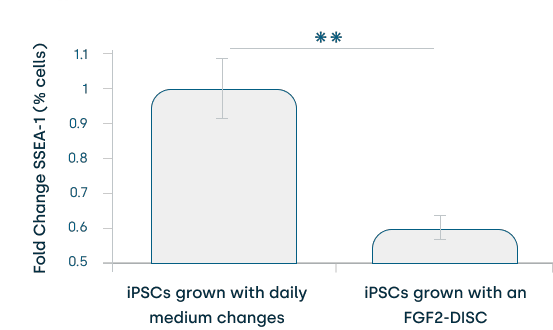
A) SSEA4 pluripotency marker increases and SSEA1 differentiation marker decreases in PSCs grown with an FGF2 DISC™ and 2x a week feeding with mTESR1 compared to conventional 7x a week mTESR feeding, assessed after 7 passages and quantified by flow.
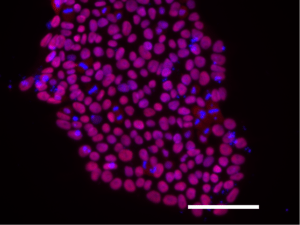
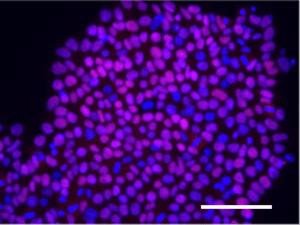
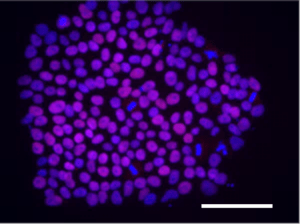
B) PSC grown with an FGF2 DISC™ stain for the pluripotency markers NANOG, OCT4 and SOX2 expression
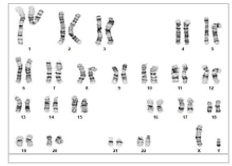
C) Normal karyotype is maintained after 15 passages of PSCs in FGF2 DISC™ containing media with 2x a week feeding.
An example of a typical feeding schedule when culturing cells. Note, daily media changes requires work on weekends and holidays.

Our recommended feeding schedule using an FGF2 DISC™ is only 2-3 times per week, providing a stable FGF2 growth signal while allowing scientists more time to do experiments, and more flexibility on the weekends.
Note: See growth factor specific product sheets as schedule may vary depending on growth factor.
Ex. Using an FGF2 DISC™ reduces the frequency of media changes in iPSC cultures, resulting in a 50-66% savings in medium costs.

Ex. An FGF2 DISC™ reduces the frequency of media changes in iPSC cultures, resulting in a 50-66% savings in time feeding cells.